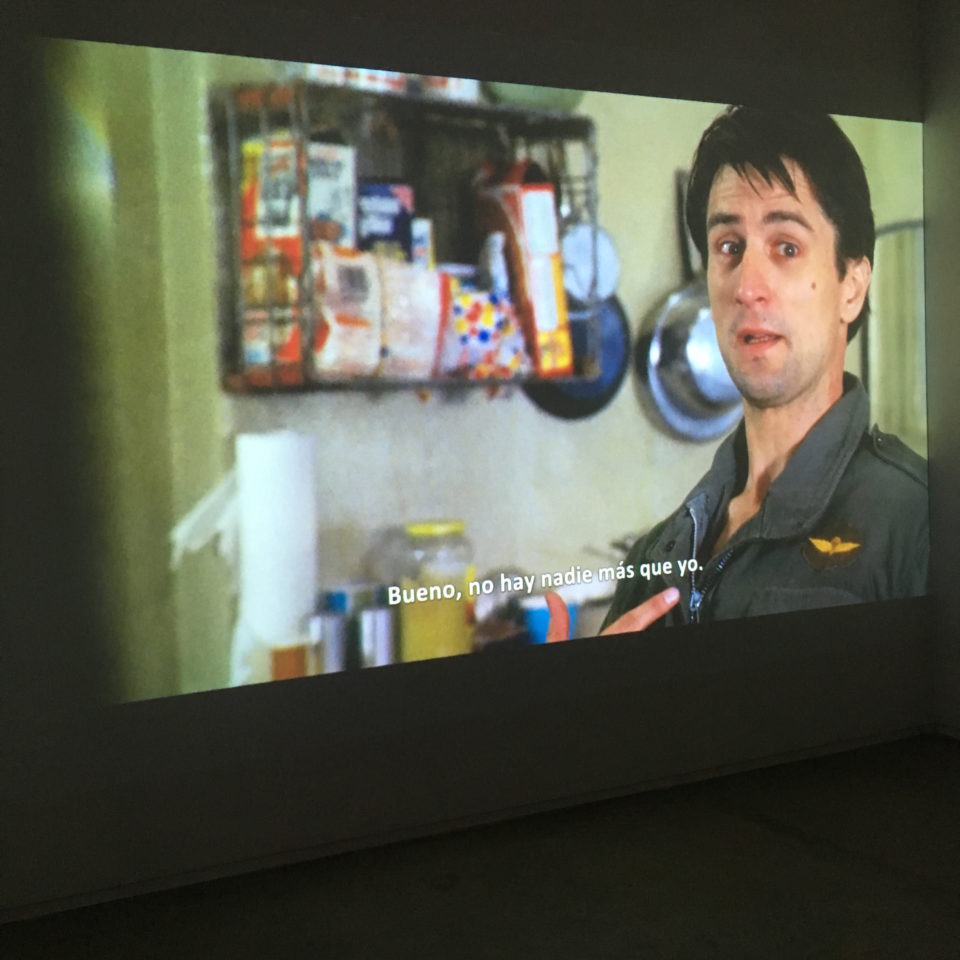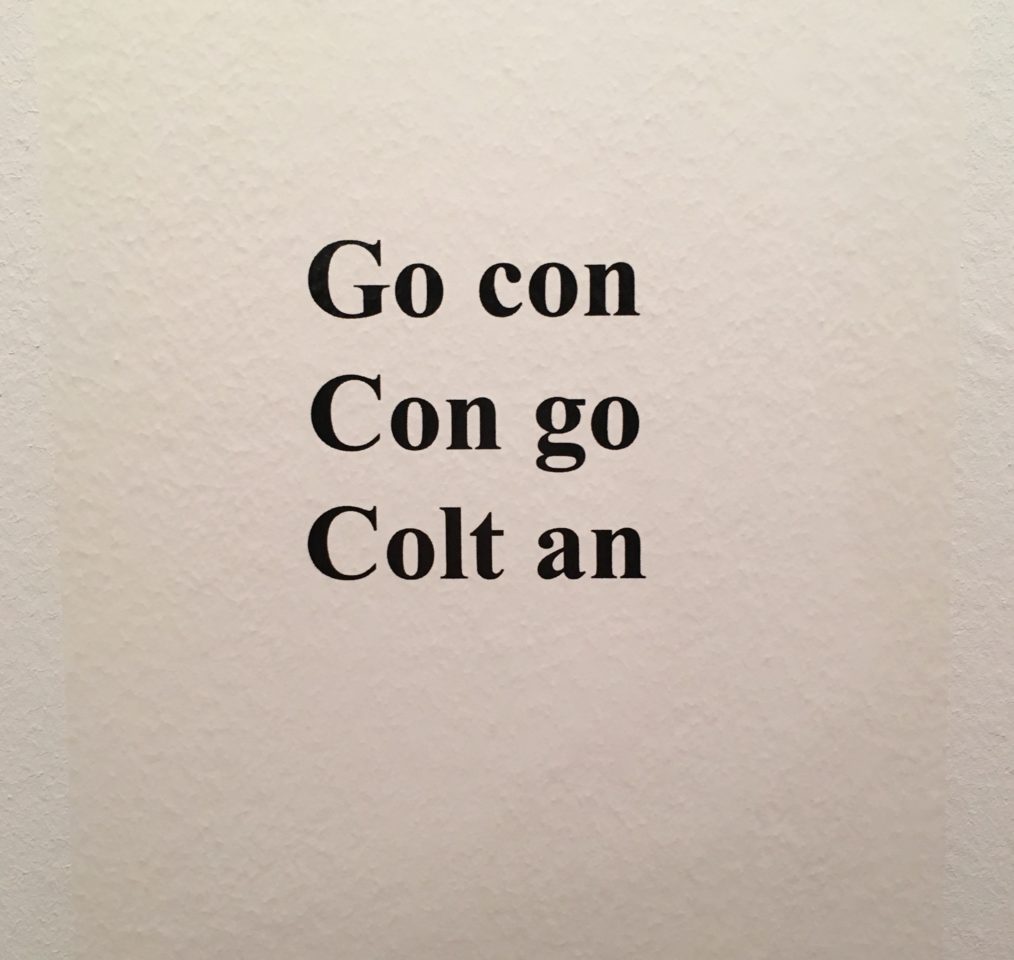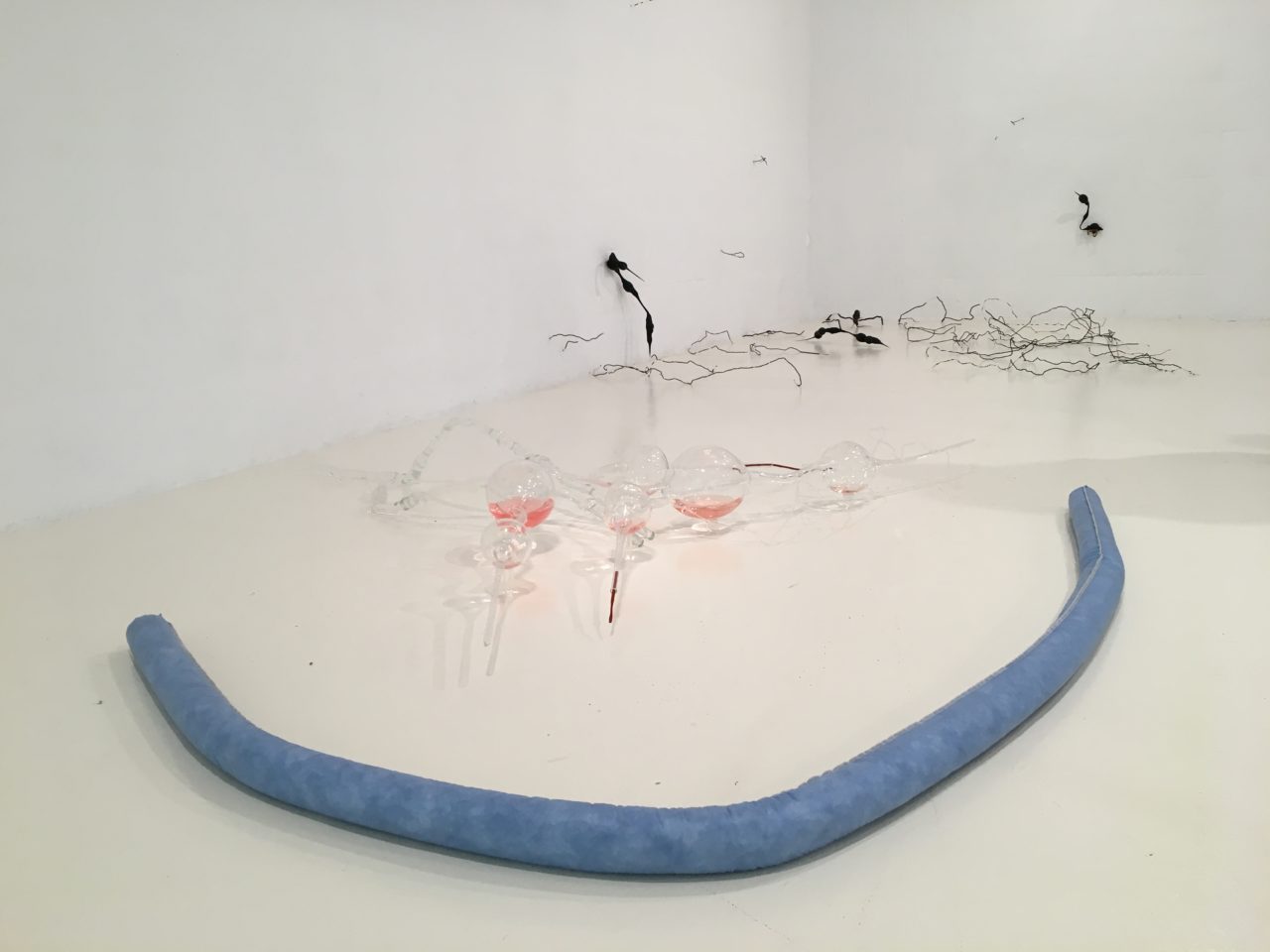info@graf.cat
November – December 2018
by Carolina Jiménez
Of instabilities and bodies that continue each other
There is a photo in the Instagram account of the artist Alba Mayol Curci that I have been going back almost every day during the last weeks of November. In the photo you can hardly distinguish three human figures swimming at night in the sea. The caption says “yes to everything_it was love”. YES to everything, YES always was a workshop by Marc Vives for Hangar in collaboration with the project Here fits a theatre by Ignacio de Antonio and AH UM that took place during the 5th and 11th of November in different places of Barcelona. A space instituted to think and foster the conditions in order to “be together” where it is possible to ask critically What can be taught? What, how and why we want to learn? Why exposing ourselves to what we do not know? Why do we want to be together? And in the end, can it be done through art? That week, among many other things, we structured a schedule, we negotiated availabilities, we looked for common moments, we ate together or not, we drank together or not, we cut our hair or not, we got tattoos or not. We were together or not.
The image of the beach at night corresponds to one of the activities that were developed during the workshop. On that day, the people who wanted or were able to went to swim in La Barceloneta. I was not among them. Alba’s Instagram photo reveals that you can feel nostalgia for an unlived, shared moment. An affirmative nostalgia that would arise from the overcoming of our separate bodies. Because, what if our bodies are neither together nor separate but are placed in another relational logic? During that non-workshop of the yes our bodies continued each other. Our bodies-in-relation beyond the union / separation duality. Where I was not, there was another person. What I did not know, someone else knew. What I did not cook, someone else cooked it. The photo that I did not make, was taken by another person … The finitude of our bodies as a condition not of separation but of continuation was the basis for “being together”, based on the intra-action of our singular bodies and their different voices, present or not.
Continuing with affirmative proposals, days later I attended the lecture that Rosi Braidotti gave at CCCB about her research on the constellation of post-humanism and its materialism “of the flesh”. During her talk she summoned two notions that since then have not stopped resonating in my head: that of epistemological creativity and that of metastability. The metastability is a concept that is included in the Posthuman Glossary of which Braidotti herself – along with Maria Hlavajova – is editor, which recovers the idea of false equilibrium by Gilbert Simondon. This term designates a situation that, far from being stable or fixed, tends to entropy. Braidotti appealed to these situations, shared encounters under the action of external disturbances that evolve towards a state of strongly stable equilibrium against epistemological accelerationism and new forms of production for production emanating from cognitive capitalism. So I go back and I think about the non-workshop of the yes, which, as Alba wrote, was love, and perhaps also an opportunity as humble as it is radical to think about the possible from the uncertainty of the possible. A situation, an impasse affected by restlessness as a form of non-stable organization that displaces and dilates the limits of the liveable, despite the dictates of the system in which we live. How is it possible to give consistency and sustainability to these practices of continuous reconfiguration of the limits?
Estado de Malestar (discomfort_exhuberance_anomaly) by María Ruido is a documentary that explores another of the aporias of late capitalism; the pathologization and privatization of mental illnesses such as stress, depression and attention disorders, in order to leave them outside of any systemic outline of social foundation. Based on texts by Mark Fisher, Franco ‘Bifo’ Berardi and Santiago López Petit, as well as some conversations with psychiatrists and people affected or diagnosed, especially with the group of activists InsPiradas de Madrid, Estado de Malestar is proposed as an audio-visual essay about social symptomatology and psychic suffering, and about what places and actions of resistance we can build to fight it. The film premiered in the context of LOOP Festival and can be seen until January 13th 2019 at Espacio Balcón in Arts Santa Mònica.

Also under the umbrella of LOOP Festival was premiered Men in trouble by Antje Ehmann & Harun Farocki at the gallery Àngels Barcelona. The exhibition is presented as a review of the crisis of masculinity (in the history of cinema) and sexism (of Hollywood). In the installation of six channels that is in the entrance hall of the gallery, Ehman & Farocki direct their gaze towards the suicides of the male protagonists of up to thirty-eight films. The device works like a video game. Dressed in red and black, like “game over”, they give way to the next screen. The proposal is completed with: “Dubbing”, with the scene in loop, dubbed in three languages, of the iconic soliloquy with Robert De Niro in front of the mirror, and “The Double Face of Peter Lorre”, a documentary filmed by Farocki and Felix Hofman in the 80s that reconstructs the ups and downs of Lorre’s career. Until January 11th 2019.

In November was presented for the first time in Barcelona Aids anarchive by Equipo re (Aimar Arriola, Nancy Garín and Linda Valdés), a long-term research project that aims to explore the cultural, social and political dimension of the so-called “crisis of AIDS “in Spain and Latin America. A critical archive or anarchive of materials that addresses HIV / AIDS not only from the medical point of view, but as a change of visual, affective and economic paradigm in cohabitation with the underpinning of neoliberal policies and globalization processes. Despite its status as a total event,Aids anarchive takes into consideration the differential factors that define each of the scenarios in which AIDS appeared. Thus, taking into account the context of Barcelona, this exhibition that focuses on the 90s, has two lines of argument: the ways of making “public sphere” and the pharmacologization of life. In addition, over the months in which it will be active the exhibition, three cases of studies will be developed: the action of the collective Act Up Barcelona (until January 14th 2019), the realization of the mural by Keith Haring All together we can stop AIDS (from January 15th to March 4th 2019) and the meeting of AIDS with heroin (from January 5th to April 18th 2019). Aids anarchive can be visited on the ground floor of the MACBA’s Centre d’Estudis i Documentació until April 18th 2019.

I finished the month getting to know Verni; a viscous, turbid, dark and toxic monster that is nourished by the remains of engines boat´s oil that have reached the coast and have been ended up on the rocks. Verni is also transparent, delicate, clean and acquires sinuous and sensual forms thanks to the ductile properties of its other main element, glass. Verni is not one, but many. It constitutes an ecosystem, a territory, an organism that pursues the radical reconfiguration of the assemblages of human and non-human forces. The monstrous Verni has left behind fossil fuel capitalism because she has managed to turn just on time and avoid catastrophe, or maybe she did not do it and it is after her. Verni forms a compost community * that has understood how to inherit the multiple dimensions of living and dying, permeating every place and every ecological corridor.

Verni is the conceptual and sculptural essay that Lara Fluxà has presented at Joan Miró Foundation Espai 13 within the cycle “A monster that tells the truth”, curated by Pilar Cruz for the 2018-2019 season. The proposal questions the established ways of conceiving matter, in an attempt to trace a leap from an ontology of difference to a moment of composition ** that tends towards unpredictability, the temporal and the multiple. Verni reflects on the new dynamic states of matter, embedded in unstable situations of non-equilibrium, as a form of resistance against the imaginaries of catastrophe. It can be visited until January 6th 2019.
—
* “Compost community” is an idea that I take from Donna Haraway. It appears in The Camille Story, Children of Compost, an inter-species fable about a possible inhabitable world by all, human and non-human agents.
** Composition is a concept that I recover from Isabelle Stengers. According to her, the processes of composition would arise from a type of “us” that can only show up from situated struggles and requires that we begin to think and act not as self-sufficient subjects but through asymmetric links with a type of otherness not necessarily human.
—
Text by Carolina Jiménez for GRAF. Carolina is a researcher, an independent curator and a freelance journalist.






